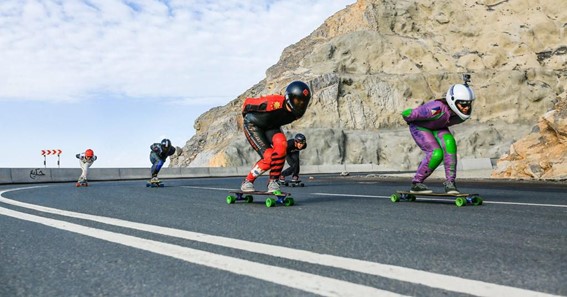Are you curious to know what is carving in longboarding? You have come to the right place as I am going to tell you everything about carving in longboarding in a very simple explanation. Without further discussion let’s begin to know what is carving in longboarding?
What Is Carving In Longboarding?
Longboarding is not just a means of transportation or a sport; it’s an expression of freedom and creativity on wheels. Among the various techniques and styles in longboarding, carving stands out as a fundamental skill that allows riders to glide effortlessly while harnessing the exhilarating power of momentum. In this blog post, we will explore the art of carving in longboarding, delving into its technique, benefits, and the sheer joy it brings to riders.
The Essence Of Carving:
Carving is a technique in longboarding that involves making flowing, sweeping turns while maintaining continuous motion. Unlike traditional skateboarding, which often involves quick, sharp turns, carving focuses on smooth, sweeping movements that emulate the feeling of riding waves or snowboarding down a mountain.
Carving Technique:
To execute a carve, a longboard rider shifts their weight from one edge of the board to the other while leaning into the turn. By flexing and extending their body and using subtle foot adjustments, riders can control their speed, direction, and the radius of their turns.
Benefits Of Carving:
- Flow and Fluidity: Carving allows riders to experience a sense of flow and fluidity as they navigate turns with grace and ease. It creates a rhythmic motion that feels almost meditative, connecting the rider with the road or the path they’re on.
- Balance and Control: Carving develops a rider’s balance and control, as they learn to distribute their weight effectively to initiate and maintain smooth turns. It improves overall board handling skills and enhances the rider’s ability to adapt to different terrain and riding conditions.
- Core Strength and Stability: Carving engages the core muscles as riders twist and turn their bodies to maneuver the board. Over time, this helps to build core strength and stability, contributing to better overall fitness and body control.
- Enjoyment and Expression: Carving adds an element of fun and creativity to longboarding. It allows riders to explore their own style, experimenting with different lines, speeds, and combinations of turns. It’s an opportunity to connect with the sensation of gliding and enjoy the freedom of movement.
Tips For Carving:
- Start with gentle, wide turns to get a feel for the motion and build confidence.
- Keep your knees slightly bent and your body relaxed, allowing for better balance and smoother transitions.
- Focus on shifting your weight and engaging your core as you initiate turns, maintaining a controlled and fluid motion.
- Experiment with different board setups, such as choosing a board with a flexier deck or looser trucks, to find a setup that suits your carving style.
Conclusion:
Carving is the art of fluid and graceful riding in the world of longboarding. It allows riders to tap into a state of flow, harness their balance and control, and experience the sheer joy of gliding along the pavement. Whether you’re a beginner or an experienced rider, mastering the technique of carving can unlock a whole new level of enjoyment and self-expression on your longboard. So, embrace the art of carving, explore the curves and contours of your favorite routes, and let the exhilaration of the ride carry you to new heights of longboarding bliss.
There is more such information on popularweby
FAQ
What Does Carving Mean In Skateboarding?
Carving on a skateboard is where you make sharp turns (or carves) that help you control your speed. In longboarding, you can make large S-shaped turns just like in skiing or snowboarding. This is a super fun and relatively easy way to control your speed. Carving on a skateboard has a very similar feel to surfing.
What Is The Difference Between Carving And Pumping Longboards?
in addition to push transportation, you intend to ride your longboard like a surfboard, carving turns on flat ground or mild hills, alternatively leaning forward on your toes and backward on your heels for “pumping” – that is, gain speed through quick successive turns.
Does Carving On A Longboard Slow You Down?
You can also carve at very high speeds to slow down a little bit before footbraking or sliding into a corner – it can go hand in hand with airbraking to scrub a bit of speed off. The key to carving is sliding your wheels slightly in each turn, which slows you down a little and keeps things under control.
What’s The Difference Between Skidding And Carving?
A carved turn means that your skis are on edge throughout the turn and the skis’ tip and tail cut through the same point in the snow, leaving a clean arc in your wake. If you’re not tipping your skis on edge before your skis start turning in the other direction, you’re skidding–not carving.
How do you carve on longboard
What is longboard carving?
